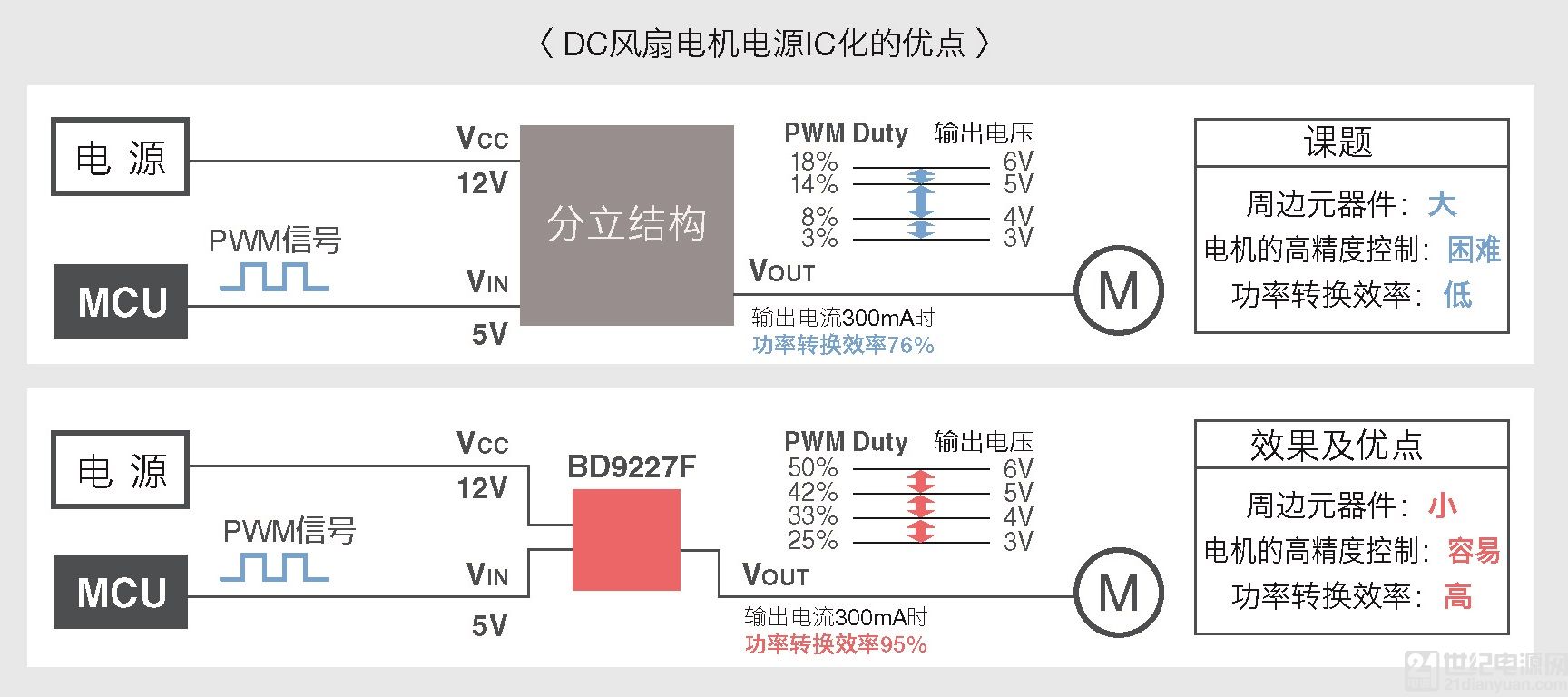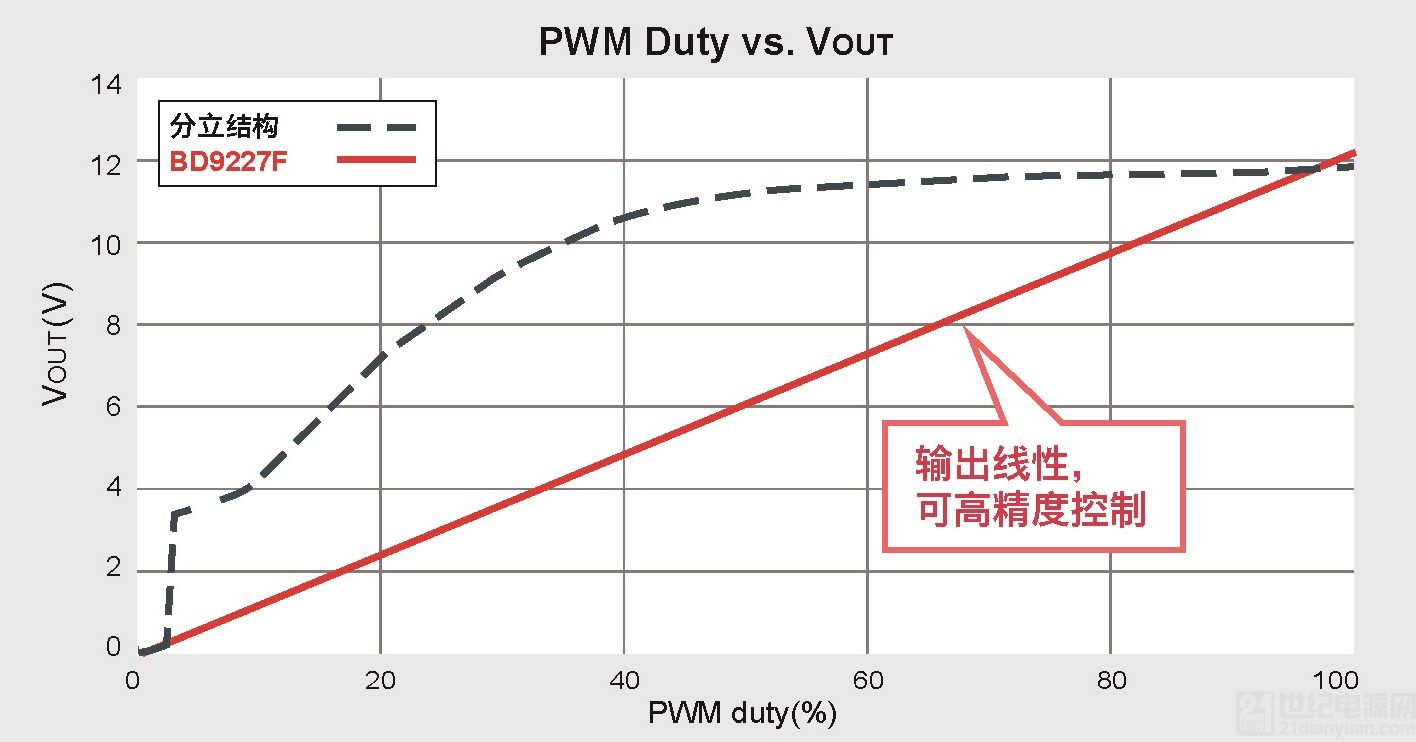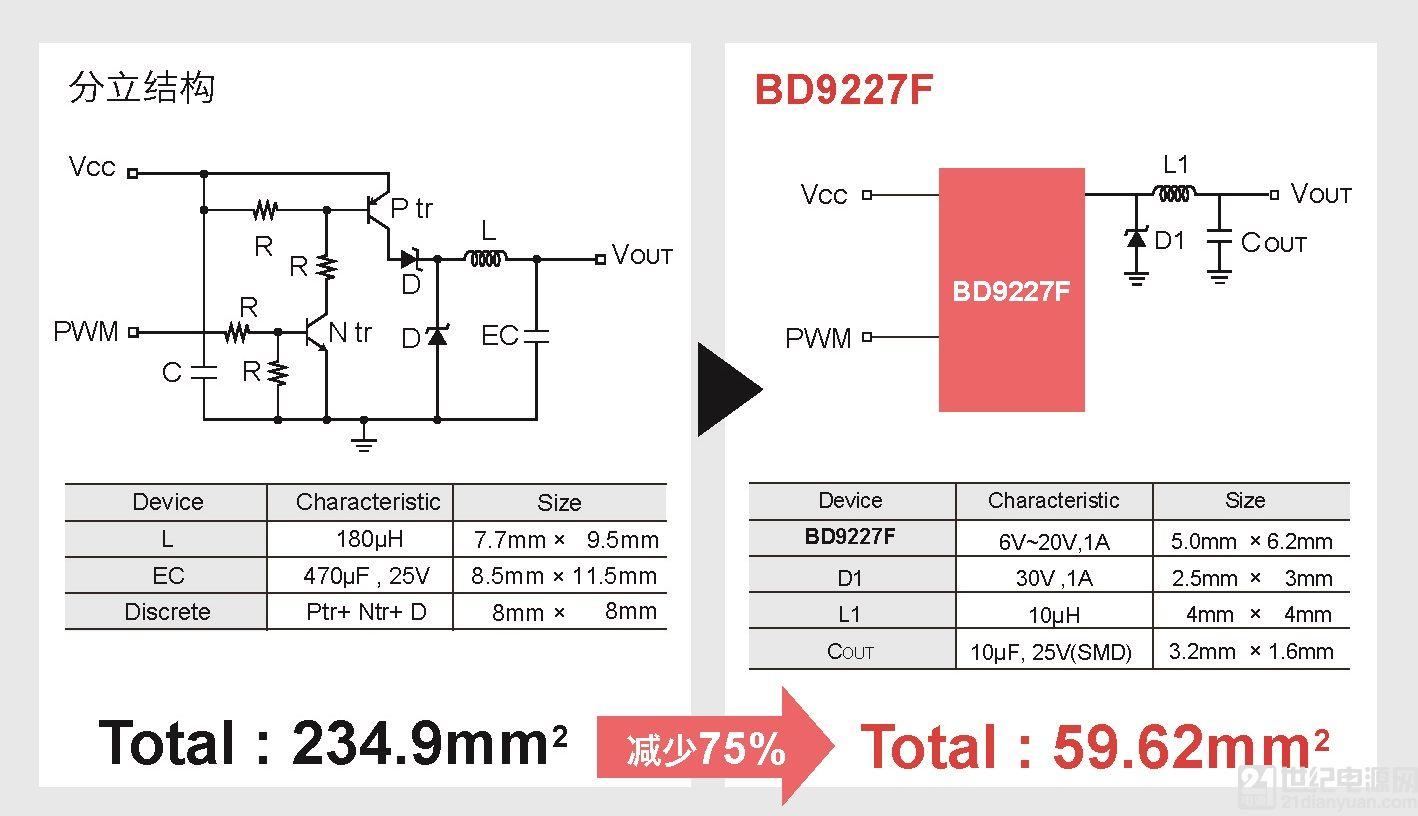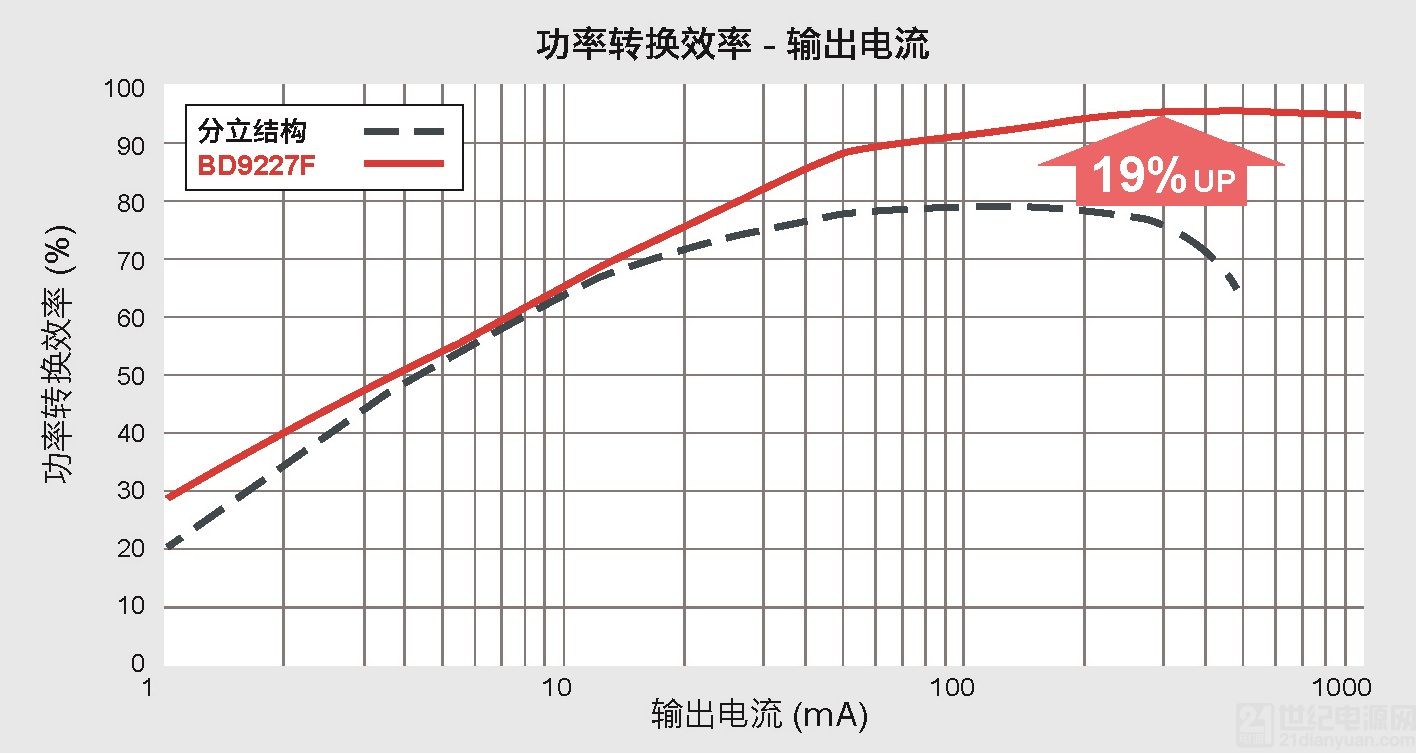ROHM, a leading global semiconductor manufacturer, has introduced the step-down DC/DC converter BD9227F, specifically designed as an optimal power supply solution for DC fan motors in refrigerators.
The BD9227F represents a breakthrough in power supply technology, as it is the first IC capable of controlling the output voltage of a DC fan motor based on the duty cycle of a PWM signal generated by an MCU. Compared to traditional discrete component setups, this IC enables high-precision control and high-frequency operation up to 1 MHz through advanced analog circuit design. As a result, large inductors and output capacitors can be significantly reduced in size, cutting component footprint by approximately 75% and boosting power conversion efficiency by 19% at 300 mA output current. This makes the device ideal for achieving compact, efficient, and precise motor control in modern appliances.
Mass production of the BD9227F began in October 2016, with a monthly output of 100,000 units. The sample price is 500 yen per unit (excluding tax). The initial manufacturing stage is handled by ROHM Hamamatsu Co., Ltd. in Hamamatsu City, Japan, while the later process takes place at ROHM Electronics Philippines, Inc. in the Philippines.
In recent years, the electronics industry has been driven by the demands for "intelligence," "miniaturization," and "high efficiency." With nearly 50% of global electricity consumption attributed to motor-driven systems, there's a growing need for more intelligent, compact, and energy-efficient motor control solutions. The BD9227F addresses these challenges effectively, making it a key component for next-generation applications.

Traditionally, DC fan motor power supplies in appliances like refrigerators have relied on discrete components, which limit high-precision control and high-frequency operation. These systems require large coils and output capacitors, leading to larger footprints and less efficient performance.

1. **Linear Control for Precise Motor Speed** In conventional setups, the output voltage does not linearly correspond to the PWM duty cycle, making accurate motor speed control difficult. The BD9227F ensures linear voltage control based on the MCU-generated PWM signal, allowing for highly accurate motor speed regulation.

2. **75% Smaller Footprint** A major drawback of discrete designs is their inability to support high PWM frequencies, requiring large inductors and capacitors that take up significant space. The BD9227F operates at 1 MHz, enabling smaller peripheral components and reducing the overall footprint by 75%.

3. **High Efficiency Across Full Load Range** The BD9227F delivers improved efficiency across all load conditions. At 300 mA, it achieves a 19% increase in power conversion efficiency compared to discrete solutions, with even greater improvements at higher loads.
4. **Supports 100% Duty Cycle** By integrating a high-side PMOS transistor, the BD9227F can generate a 100% duty cycle output, which is typically challenging to achieve with standard ICs.

*1) PWM (Pulse Width Modulation), Duty (Duty Cycle) PWM is a technique used to control output voltage by adjusting the on-time and off-time within a single cycle. The duty cycle refers to the ratio of the on-time to the total cycle time. A higher duty cycle results in a higher output voltage.
Harness Tester,Automotive Wiring Loom,Electric Wire Splicers,Electrical Wire Connectors
Kunshan Bolun Automation Equipment Co., Ltd , https://www.bolunmachinery.com